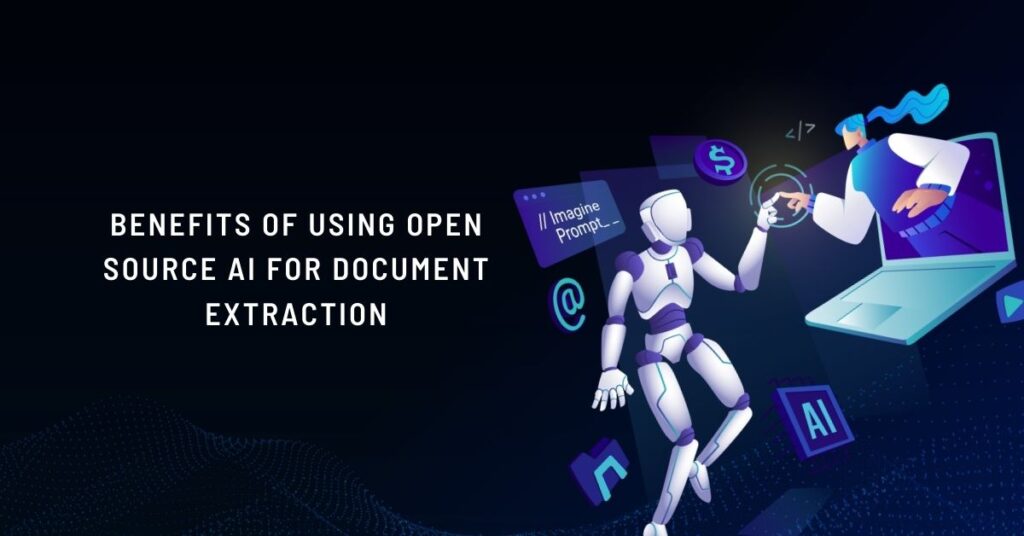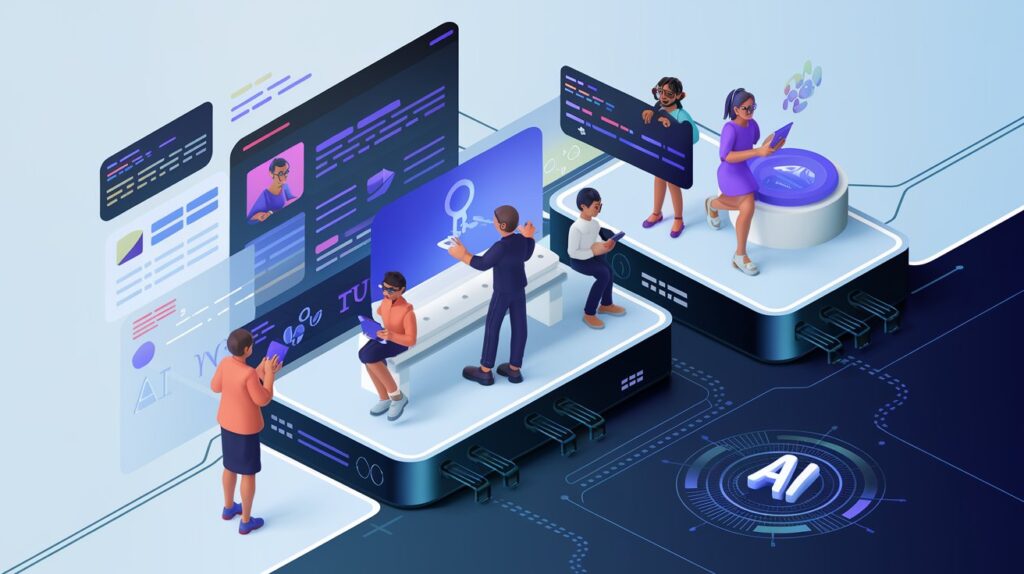Introduction
In an era of data-driven decision-making, document extraction has become a crucial task across industries. From automating data retrieval from invoices and contracts to parsing academic papers, the ability to efficiently and accurately extract information from various document types is essential for streamlining workflows and improving operational efficiency. Generative AI, a powerful technology that can generate and process data, is revolutionizing the field of document extraction by enhancing accuracy, handling unstructured data, and automating the extraction process.
In this guide, we will explore the top open-source generative AI applications for document extraction and how they can help streamline your workflow. We will cover a range of tools, highlighting their capabilities, advantages, and practical use cases to help businesses, developers, and researchers make informed decisions about which tools to integrate into their processes.
Table of Contents
What is Document Extraction and How Does Generative AI Help?
Document extraction refers to the process of retrieving relevant information from documents, which can be in various formats such as PDFs, images, or text files. This task is crucial in data processing, automation, and information management, as it enables organizations to convert unstructured data into structured, actionable insights.
Generative AI enhances traditional document extraction methods by:
- Improving Accuracy: Generative AI models are capable of understanding and interpreting complex document structures, leading to more precise extraction of data.
- Handling Unstructured Data: Unlike traditional methods that struggle with unstructured data, generative AI can effectively manage and extract information from diverse document formats.
- Automating Extraction: By leveraging machine learning algorithms, generative AI automates the extraction process, reducing manual effort and increasing efficiency.
These advancements enable businesses to handle large volumes of documents with varying structures and contents, thereby improving their data processing capabilities.
Top Open Source Generative AI Applications for Document Extraction
1. LayoutParser
Overview: LayoutParser is an open-source tool that utilizes computer vision and generative AI to analyze and extract information from document layouts. It is designed to handle complex document structures and is highly effective in layout analysis.
Key Features:
- Document Layout Analysis: LayoutParser can detect and interpret various elements of a document layout, such as text blocks, tables, and images.
- Customizable Models: Users can train models tailored to specific document types and structures.
- Integration with Other Tools: It can be integrated with other data processing tools to enhance overall document management workflows.
Use Cases:
- Publishing: Extracting structured data from magazines, newspapers, and other publications.
- Legal: Processing legal documents and contracts with complex layouts.
- Education: Analyzing and extracting information from academic papers and textbooks.
Industries:
- Publishing
- Legal
- Education
2. PDFPlumber
Overview: PDFPlumber is an open-source tool specifically designed for extracting structured data from PDFs. It leverages AI models to handle complex documents with tables, text, and images.
Key Features:
- Table Extraction: PDFPlumber excels at extracting tables and structured data from PDF documents.
- Text Extraction: It accurately extracts text from various sections of a PDF.
- Image Handling: Capable of handling and extracting images embedded within PDF files.
Use Cases:
- Finance: Extracting data from financial reports and statements.
- Healthcare: Processing medical records and patient information.
- Research: Analyzing research papers and data sheets.
Industries:
- Finance
- Healthcare
- Research
3. GROBID
Overview: GROBID (GeneRation Of Bibliographic Data) is an open-source tool focused on extracting and structuring data from academic and scientific documents. It uses generative AI to process bibliographic information, citations, and metadata.
Key Features:
- Bibliographic Data Extraction: GROBID extracts and structures bibliographic data from academic papers.
- Citation Management: It can parse and organize citations for research purposes.
- Metadata Extraction: Extracts metadata such as authors, titles, and abstracts from scientific documents.
Use Cases:
- Academic Research: Managing citations and bibliographic data for research papers.
- Publishing: Assisting publishers in organizing and structuring scientific content.
- Libraries: Enhancing the cataloging of academic resources.
Industries:
- Academic Research
- Publishing
- Libraries
4. Apache Tika
Overview: Apache Tika is a versatile open-source tool with broad document extraction capabilities. It supports numerous file types and integrates with machine learning models for intelligent data extraction.
Key Features:
- Multi-Format Support: Tika can extract data from a wide range of file formats, including PDFs, DOCX, and more.
- Machine Learning Integration: It leverages AI models for improved data extraction and content analysis.
- Content Metadata Extraction: Extracts metadata from various document types.
Use Cases:
- Content Management: Integrating with document management systems to enhance content processing.
- Data Warehousing: Extracting and organizing data for large-scale data warehousing solutions.
- Enterprise Search: Improving search capabilities by extracting and indexing document content.
Industries:
- Content Management
- Data Warehousing
- Enterprise Search
5. DocTR (Document Text Recognition)
Overview: DocTR is an AI-based tool that specializes in real-time extraction of printed and handwritten text from documents. It is particularly useful for handling documents with varying text formats.
Key Features:
- Real-Time Text Extraction: Capable of extracting text from both printed and handwritten documents.
- High Accuracy: Utilizes AI algorithms to ensure high accuracy in text recognition.
- Integration Capabilities: Can be integrated with existing workflows and systems.
Use Cases:
- Legal: Extracting information from legal documents and handwritten notes.
- Healthcare: Processing handwritten medical records and prescriptions.
- Business: Automating data entry from forms and handwritten reports.
Industries:
- Legal
- Healthcare
- Business
Benefits of Using Open Source AI for Document Extraction

1. Customization
Open-source tools offer significant flexibility by allowing developers to customize models for specific document types and industry needs. This customization ensures that the extraction process is tailored to the unique requirements of different applications, enhancing accuracy and efficiency.
2. Cost Efficiency
Open-source tools are often more cost-effective compared to proprietary software solutions. They eliminate licensing fees and offer the flexibility to modify and adapt the software according to specific needs, making them a budget-friendly option for businesses of all sizes.
3. Community Support
Active developer communities contribute to the continuous improvement and updating of open-source tools. These communities provide valuable support, share best practices, and contribute to the development of new features, ensuring that the tools remain relevant and effective.
Common FAQs
- What is the main advantage of using open-source tools for document extraction?
- Open-source tools offer customization, cost efficiency, and active community support, making them a versatile and budget-friendly choice.
- Can these tools handle various document formats?
- Yes, many open-source document extraction tools support multiple file formats, including PDFs, DOCX, and image files.
- How accurate are generative AI models in extracting data?
- Generative AI models are highly accurate and continuously improve as they process more data, though the accuracy may vary depending on the quality of the input documents.
- Are there any limitations to using open-source document extraction tools?
- While open-source tools offer many benefits, they may require technical expertise for customization and integration. Additionally, support may be limited compared to proprietary solutions.
- How can businesses integrate these tools into their existing workflows?
- Integration can be achieved by linking the tools with document management systems, utilizing APIs for automation, and customizing the models to fit specific needs.
- Are there any specific industries that benefit most from these tools?
- Industries such as finance, healthcare, legal, and academic research benefit significantly from document extraction tools due to their need for accurate and efficient data processing.
- Can these tools handle unstructured data?
- Yes, generative AI models are designed to handle unstructured data and convert it into structured, actionable information.
- What kind of support is available for open-source tools?
- Support typically comes from developer communities, forums, and online documentation. Some projects also offer commercial support options.
- How frequently are open-source tools updated?
- The frequency of updates varies by project, but active communities and contributors often ensure that tools are regularly updated and improved.
- Is it necessary to have technical expertise to use these tools?
- While some technical knowledge is beneficial, many open-source tools come with documentation and community support to assist users in implementing and customizing the software.
Practical Tips
Selecting the Right Tool
- Evaluate Document Complexity: Choose a tool based on the complexity of your documents. For instance, if you handle complex layouts or multi-format documents, LayoutParser or Apache Tika may be ideal.
- Consider Volume: For high-volume document processing, tools like PDFPlumber or DocTR can handle large datasets efficiently.
- Industry Requirements: Select tools that align with your industry needs, such as GROBID for academic research or DocTR for legal and healthcare applications.
Integrating Tools with Existing Workflows
- Document Management Systems: Integrate extraction tools with document management systems to automate data processing and improve content organization.
- APIs for Automation: Utilize APIs provided by these tools to automate data extraction and integrate it with other business processes.
- Custom Models: Customize models to suit specific document types and industry requirements, ensuring accurate and relevant data extraction.
Conclusion
In summary, open-source generative AI tools for document extraction offer significant benefits, including flexibility, cost efficiency, and robust community support. Whether you need to extract data from invoices, PDFs, or scientific papers, these tools provide the accuracy and scalability required to streamline your operations. Explore these open-source solutions today and see how they can transform your document extraction process.
Explore the power of open-source generative AI tools and enhance your document extraction capabilities. Start integrating these tools into your workflow and experience the benefits of automation and efficiency firsthand.


